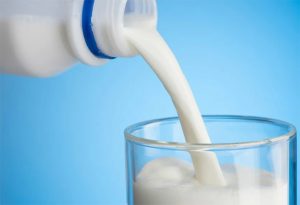
The cheese handily topped $2 per pound for the first time since November 2019 in the Memorial Day holiday-shortened week. The 40-pound Cheddar blocks closed Friday at $2.23 per pound, up 29.25 cents, all on unfilled bids, and 51.5 cents above a year ago.
The 500-pound Cheddar barrels finished Friday and the month at $2.0225, up 13.25 cents on the week and 48.25 cents above a year ago.
No blocks were sold last week but 18 carloads changed hands on the month, down from 19 in April. There were 26 cars of barrel sold last week, with 140 for the month, up from 91 in April.
A buyer finally coaxed a seller for 1 load of block on Monday but it took 17 more cents to do it. The blocks gained another 10.5 cents Tuesday on 2 more sales and set a record at $2.5050 per pound as traders ignored the cheese price downturn in the Global Dairy Trade auction.
The barrels gained 7.75 cents Monday and shot up 11.25 cents Tuesday, hitting $2.2125, the highest price since Sept. 30, 2014. When will the gains stop? FC Stone’s Dave Kurzawski wrote in Tuesday’s Early Morning Update, “It’s possible there are fresh highs in sight here,” but he expects the market will eventually run out of steam, likely within the next two weeks.
He reasons: “The wave of buying that began with export orders in April and gave way to pipeline refilling and new orders as states opened up in May, was given rocket fuel by government buying. In particular, the U.S. Food Box Program, which likely gets the most press because it’s the most unusual government program involving dairy in recent memory.”
“Food Box Program participants bid a price for all rounds up front,” Kurzawski explained. “But Round quantities have yet to be determined. In the next couple of weeks we’re going to get some details as to Round 2 of the program and what those volumes may or may not look like. In other words, now that ‘Stranger Things’ is a dairy market headline, not just a Netflix series, we have to ask how many dairy boxes can be filled at higher levels.”
He asks, “Will participants back out, unable to make the economics work? Will the USDA permit a price rebid? Is a Round 2 bullish or bearish? We should have some answers on this soon, but given the pace of deliveries so far, it seems likely that all the product awarded in Round 1 is not going to make it to consumers in May and June.”
Kurzawski adds that we will get our first look at export numbers for April on Thursday, plus the Dairy Products report will show us what finished dairy products we produced in April.
Dairy Market News says the cheese price push has Midwest cheese producers also questioning how long the busy ordering stretch will last. Foodservice and retail demand have kept them busy, with some at six- and seven-day work weeks. Milk is much less available than it was at the height of the COVID-19 effect last month when some plants were down and others were running limited schedules. Milk prices are reported at least at Class, but most are at slight overages, according to DMN. Cheese inventories are tight, particularly on blocks.
Western cheese output is also active as milk continues to be available and nonfat dry milk is being used for fortification. Many loads of cheese have cleared through export markets. Cheese continues to be available to domestic buyers but supplies have tightened and prices are higher for uncommitted loads. The cheese market is in search of a “new balance,” says DMN, but “Uncertainty related to what will happen to market conditions in the coming months is leading industry players to be more cautious in their day to day decision making.”
Cash butter was not doing quite as well and fell to $1.5775 per pound last Wednesday but closed Friday at $1.66, up 6.75 cents on the week, after losing 5.25 cents the previous week, but was 70 cents below a year ago; 18 cars sold last week, 95 for the month, down from 101 in April.
Monday’s butter inched a half-cent higher and it jumped 5.5 cents Tuesday, to $1.72, highest since March 23.
Butter makers continue to report similar demand tones week to week. Foodservice orders have climbed back from their depleted state in the height of the COVID-19 closures but are still below year-ago levels. Retail has been busy and filled some of the gaps left by affected foodservice ordering.
Butter production is steady but producers are relaying concern about the upcoming fall. Butter inventories are moving either via a rebounding foodservice sector or improving retail orders.
Western contacts say retail butter sales are strong but bulk butter demand is weak. The opening of restaurants has improved foodservice sales but volumes are at a fraction of normal levels. Class II processors and ice cream makers are pulling more heavily on cream stocks so less cream is moving to the churn. Slightly better demand and lighter production has cut into stocks but butter inventories are long.
Grade A nonfat dry milk remained comfortably above $1 per pound and closed Friday at $1.03, 1.75 cents higher on the week but 2.5 cents below a year ago. 15 carloads sold on the week, 76 for the month, up from 61 in April.
The powder backed down a half-cent Monday and lost a penny Tuesday, slipping to $1.0150.
Dry whey saw a 30.50 cent per pound close Friday, down 5.75 cents on the week after losing 2.75 cents the previous week, and was 4.75 cents below a year ago. There were 32 sales on the week at the CME, 59 for the month, up from 18 in April.
The whey lost a quarter-cent Monday but regained 0.75 cents Tuesday, crawling back to 31 cents per pound.
GDT inches up 0.1%
Buttermilk and whole milk powder inched the Global Dairy Trade’s weighted average 0.1% higher Tuesday, following a 1.0% gain on May 19. Sellers brought 48.4 million pounds of product to market Tuesday, highest since March 17.
Buttermilk powder was up 9.4%, with whole milk powder up 2.1%, after it slipped 0.5% in the last event.
GDT Cheddar led the declines, down 5.3%, after dipping 6.0% last time. Butter was down 4.4%, following a 1.9% decline, and anhydrous milkfat was down 2.9%, after rising 2.7% last time. Lactose was down 4.1% and skim milk powder was off 0.5%, after jumping 6.7% on May 19.
FC Stone equated the GDT 80% butterfat butter price to $1.6069 per pound U.S., down 7.6 cents from the last event. CME butter closed Tuesday at $1.72. GDT Cheddar cheese equated to $1.5969 per pound, down 15.6 cents, and compares to Tuesday’s CME block Cheddar at a world high $2.5050.
GDT skim milk powder averaged $1.1477 per pound, down from $1.1563, and whole milk powder averaged $1.2522, up from $1.2141. CME Grade A nonfat dry milk closed Tuesday at $1.0150 per pound.
Dumping ends
You’ll recall that April milk output totaled 18.7 billion pounds including milk that was dumped. The May 22 Dairy and Food Market Analyst reported that milk dumping surged in April, based on its analysis of Federal Milk Marketing Order data.
The Northeast FMMO saw about 131 million pounds of milk dumped, up from 23 million pounds in March. The Mideast had 24 million pounds dumped, up from 1.2 million in March and the DFMA estimates about 22 million pounds were dumped in Florida, with about 10 million pounds in the Southeast.
Speaking in the June 1 “Dairy Radio Now” broadcast, analyst and editor, Matt Gould reported that dumping from those four FMMOs totaled about 187 million pounds or 1.0% of U.S. milk output.
He speculates that the available milk supply contracted in April, “a dramatic shift,” and says this will be evidenced in the April Dairy Products report. Milk dumping has all but stopped, he said, as cooperatives and processors have asked farmers to decrease their milk output and milk is now selling at premiums above Class.
“Compare that to a month ago when we were dumping milk and spot milk prices in some parts of the country were at zero,” Gould concluded. “This is a really dramatic swing and May’s Dairy Products report will be interesting as we reopened the economy and milk supplies were cut back which portends less dairy product output, but that’s yet to be determined and to be seen.”






















